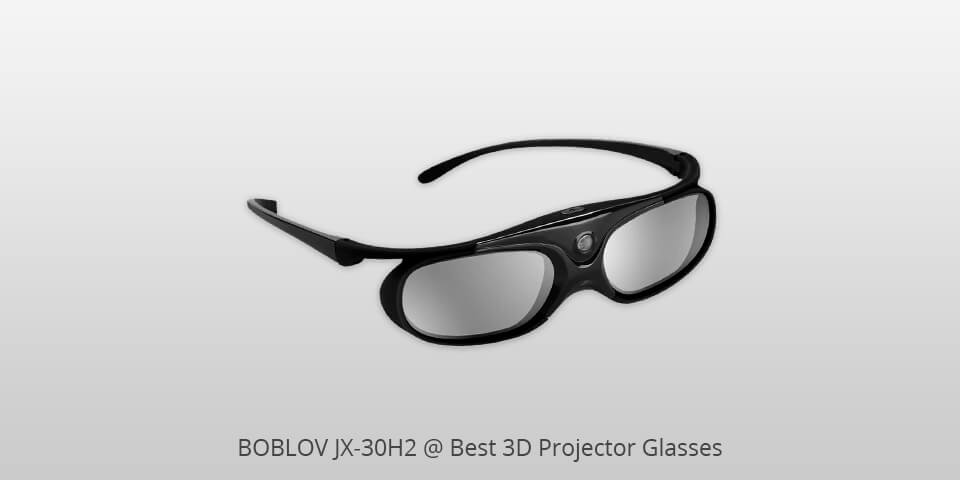

- #The best 3d glasses for projectors movie#
- #The best 3d glasses for projectors 1080p#
- #The best 3d glasses for projectors Pc#
- #The best 3d glasses for projectors tv#
We predict this setup, in which a white light is beamed from the projector to the screen to the glasses, will become the standard for 3D projection.Want 3D glasses that are compatible with all DLP projectors, then these 3D glasses are for you. So far, all 3D DLP projectors use the DLPLink protocol to sync the glasses and the screen. For active 3D, we recommend a projector with at least 2,000 lumens. Fortunately, projectors have been getting brighter over the last few years so this is not as big an issue as it used to be.

However, the image is significantly dimmer than its 2D counterpart. With active shutter glasses, cross-talk is nearly impossible. (When the right-eye image is on the screen, the glasses shut the lens of the left eye.) The glasses respond by opening and closing the corresponding lens. In this setup, the image on the screen alternates rapidly between scenes intended for each eye. This will likely remain the standard for all 3D DLP projectors in the future. Some theaters use two separately polarized projectors to compensate for this.Īs of the release of this article, all the 3D-ready projectors available in the commercial and residential market use active shutter glasses to deliver the third dimension. However, the image's brightness is greatly reduced since each eye only picks up half the light from the screen. Looking for a projector? Click here or call (888) 248-0675Ĭolor is improved and cross-talk (when one eye picks up an image meant for the other) is virtually eliminated with the polarizing method compared to anaglyph. The brain combines the two images and tada! 3D. A special polarization preserving screen is required.įilters on the glasses allow the lenses to passively pick up the light (read: image) meant for each eye. These send the projector's light through polarizing filters that force the light waves to oscillate in two different directions, one intended for the left eye, the other for the right. Many of today's cinematic 3D experiences are delivered via polarizing systems. However, it provides the poorest 3D image quality.
#The best 3d glasses for projectors tv#
Anaglyph technology is still used today and will work with the correct content and any TV or projector. These work by filtering an image composed of two almost identical superimposed color layers. Chances are everyone has seen the red and blue glasses made popular during earlier attempts at a 3D revival. To your brain, these ever-so-similar overlapping images create the illusion of depth.Īnaglyph images and glasses are the most basic way to deliver a 3D effect.

This is traditionally done with special glasses. To "see" in 3D, a slightly different image must be delivered to each eye.
#The best 3d glasses for projectors 1080p#
See our full selection of 1080p 3D projectors for home theater » How 3D Projector Technology Works: It's All In Your Head Results vary from meh to pretty ok, depending on what's actually being projected, but from our experience, native 3D content will always look better. Since 2011, we've seen host of new HD 3D projectors, including projectors that can convert 2D content to 3D. The LG CF3D 3D projector could also handle multiple 3D formats, including frame sequential, side-by-side and checker board. The LG CF3D was the first 1080p 3D projector with HDMI inputs (three total!), meaning it could process signals from 3D-ready Blu-rays and the PS3.
#The best 3d glasses for projectors Pc#
These early model 3D projectors were only 720p, and since they didn't have an HDMI input, could only receive content from a PC through a VGA or DVI cable, reducing the image quality to an acceptable, but not great, 480i.īut then everything changed in 2010 with the release of the LG CF3D, the first 1080p 3D projector for home theater. Think of how cool 11th grade geometry would have been if you could have seen parallelograms and isosceles triangles rotated in the third dimension. And those were designed mainly for educational purposes. What does all this mean for the future of 3D projectors and home theater? 3D Projectors, A Brief HistoryģD movies may have been around since the early 1900s, but 3D-ready home theater projectors didn't enter the market until 2008.
#The best 3d glasses for projectors movie#
Every week, a new 3D movie hits the box office. Night Shyamalan train wreck) was released in 2009, 3D has come back to movies in a very big way. No doubt 3D has revolutionized the cinema experience.


 0 kommentar(er)
0 kommentar(er)
